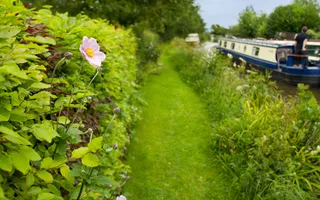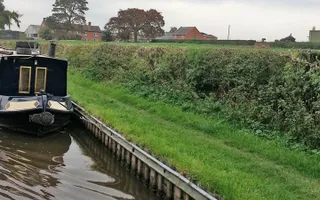We aim to prevent hedges growing into the surfaced towpath space, but this can be difficult in some areas where the towpath is narrow. We also aim to keep overhanging vegetation at a height that provides room for people to travel underneath.
Our long-term aim is to have hedges at a height that is dependent on local character and the need to maintain the function of the hedge, where appropriate.
There are many areas where our standard management is not practical and we are in the process of collecting data to enable us to develop a long-term management plan for our hedgerows.
We carry out hedgerow maintenance between October and March, this helps to avoid any disturbance to wildlife, mainly nesting birds or bat roosts. The work is carried out through cutting or flailing to either the side and/or the top of the hedgerow. Flailing is difficult on the waterways due to narrow towpaths, so we have stopped this in many locations and this has impacted upon how we can manage hedges going forward. We make every effort to remove arisings as far as reasonably practicable off the towpath and place them under the hedge itself. While we will try to get material off the towpath, removing arisings from the site can be very expensive for us and impacts how much work we can do overall. We are looking at other ways of dealing with this including ways Volunteers could help with this.
We also lay new hedges in sections where the existing hedgerow has become overgrown and won't respond well to being cut back. We have help from volunteering groups, community groups and our contractors to lay new hedges. Check our volunteering pages, and Towpath Taskforce pages for details of how to get involved and make a difference to our waterways.






